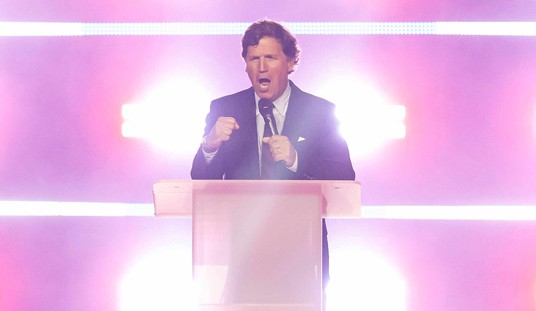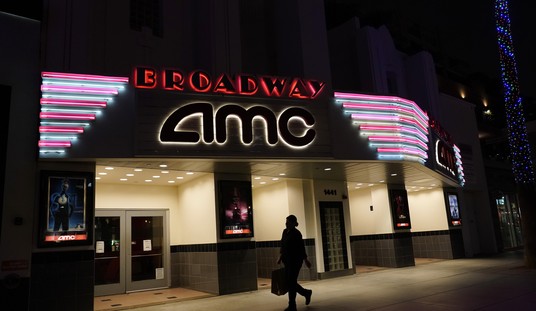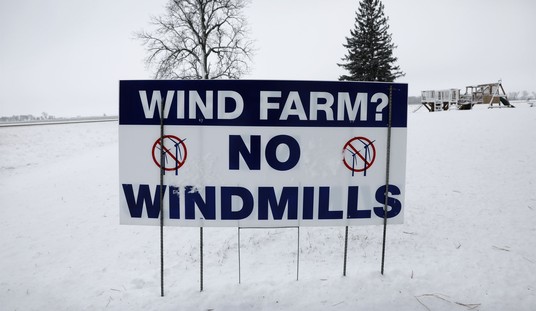Lisa Murkowski wants some explanations, but it’s probably Mark Begich who will have to answer for the ObamaCare disaster. Murkowski looked into the rollout of the exchanges in Alaska, and found that in two weeks no one from Alaska had been able to enroll in the federal exchange or buy a plan. Murkowski demanded that HHS Secretary Kathleen Sebelius explain why:
“This system that cost more than $400 million, took three years to build, and was billed as a one-stop shop for individuals seeking health insurance is not working as advertised,” Murkowski wrote. “In its first two weeks of operation, I am told that no one was able to enroll in the Alaska Exchange.”
Enroll Alaska chief operating officer Tyann Boling confirmed that no one has enrolled as of late last week.
“Now things are looking a little bit better this week,” she said. “It’s not for sure we’ve enrolled anybody yet, but things seems to be functioning a little bit better, but as of last week, we had not known of one person that had enrolled in the state of Alaska.”
Alaska has a small population — well under a million — but a higher percentage of uninsured, coming in eighth at 18.4% according to a September report in the Dallas Morning News. Plenty of Alaskans should be enrolling at this point, and their lack of access may become an issue in next year’s Senate Race. The Weekly Standard’s Michael Warren and Politico point out that Begich is already in trouble:
New polls of likely voters in three key states in next year’s U.S. Senate election show Republicans running just behind incumbent Democrats. Harper Polling, a firm associated with Republicans and working on behalf of conservative super PAC American Crossroads, conducted surveys of likely voters in Alaska, Arkansas, and Louisiana, where those state’s Democratic senators face reelection in 2014 (via Politico). In each of those races, most of the potential Republican challengers poll within single digits of the Democrat.
In Alaska, where Mark Begich is the rare Democratic senator, Republican candidate Mead Treadwell trails by one point, 43 percent to 42 percent, while likely GOP candidate Dan Sullivan trails Begich by two points, 43 percent to 41 percent. Begich is weakened in Alaska, which typically sends Republicans to Congress; just 39 percent approve of his job as senator, while 42 percent disapprove. Compare that to Alaskan voters’ approval of Barack Obama’s job as president, with 35 percent approving and 57 percent disapproving.
Access is only going to be the first problem these Democratic incumbents have to field. When the exchanges do start working, the sticker shock will far outstrip the incompetence shock. In my column today at The Week, I point out why the “reform” will end up costing everyone an arm and a leg, and why buying no coverage turns out to be the same as signing up and complying with the law:
In order to keep prices low, 21 of the 22 approved plans on the Illinois state exchange have deductibles of more than $4,000 for individuals, and $8,000 for families. Frost notes that the average employer-based coverage puts the individual deductible at $1,100.
Consider what this means to the consumer. First, the government forces Americans to buy comprehensive insurance when many don’t need it. At $466 a month, the single father in the example above will spend about $5600 a year on comprehensive insurance, which would far outstrip the medical expenses for most 33-year-old single men who might expect only a wellness check and perhaps a couple of acute visits to a clinic for urgent care a year. At retail costs, even with labs, that’s going to run less than a thousand dollars a year at most.
Now, though, his insurance won’t even cover that much. Before Illinois consumers see any benefit at all from their insurance policies, they will have to spend more than $4000 each year out of their own pocket — and without the benefit of health-savings accounts (HSAs) to use untaxed income for that purpose. That means that some consumers will spend much more each year over and above their newly-inflated premiums, making it less and less likely that they will ever see any benefits from their mandated insurance policies other than avoiding the small fine from the IRS for non-compliance.
Thanks to the new mandate on insurers to cover the uninsured with pre-existing conditions at community rates, most people will choose to pay that fine anyway, and buy the insurance only when serious illness or injury occurs that requires hospitalization or extended treatment. That mandated risk on insurers is one reason that premiums and deductibles have skyrocketed.
ObamaCare turns out to be a parody of real reform:
Rather than demand that consumers buy comprehensive insurance, the alternate model would have emphasized catastrophic coverage with high deductibles, which before ObamaCare were low-cost options for healthier consumers who wanted to indemnify themselves against unexpected major costs. Removing insurers from routine maintenance care would have restored price signals and competition to the family-practice market, which would have provided incentives for doctors to re-enter it. Consumers could then have used their HSAs, which are discouraged in the ACA system, to cover their own routine maintenance, and insurers could have returned to their proper role: Indemnifying people against major loss, not acting as wellness managers. That role properly belongs to patients and their physicians, not insurers and certainly not the government.
Thanks to the ACA, we have the worst of both worlds.
Forbes’ Avik Roy wondered yesterday whether the exchange debacle wasn’t green-lighted in part to delay that realization:
“Healthcare.gov was initially going to include an option to browse before registering,” report Christopher Weaver and Louise Radnofsky in the Wall Street Journal. “But that tool was delayed, people familiar with the situation said.” Why was it delayed? “An HHS spokeswoman said the agency wanted to ensure that users were aware of their eligibility for subsidies that could help pay for coverage, before they started seeing the prices of policies.” (Emphasis added.)
As you know if you’ve been following this space, Obamacare’s bevy of mandates, regulations, taxes, and fees drives up the cost of the insurance plans that are offered under the law’s public exchanges. AManhattan Institute analysis I helped conduct found that, on average, the cheapest plan offered in a given state, under Obamacare, will be 99 percent more expensive for men, and 62 percent more expensive for women, than the cheapest plan offered under the old system. And those disparities are even wider for healthy people. …
So, by analyzing your income first, if you qualify for heavy subsidies, the website can advertise those subsidies to you instead of just hitting you with Obamacare’s steep premiums. For example, the site could advertise plans that “$0″ or “$30″ instead of explaining that the plan really costs $200, and you’re getting a subsidy of $200 or $170. But you’ll have to be at or near the poverty line to gain subsidies of that size; most people will either not qualify for a subsidy, or qualify for a small one that, net-net, doesn’t make up for the law’s cost hikes.
This political objective—masking the true underlying cost of Obamacare’s insurance plans—far outweighed the operational objective of making the federal website work properly. Think about it the other way around. If the “Affordable Care Act” truly did make health insurance more affordable, there would be no need to hide these prices from the public.
True — but even this mess can’t delay it for long. People will need to start paying those premiums, and then spend $4000 before getting the first benefit from them, and that starts immediately and lasts all year long. Democratic incumbents facing red-state voters in Senate bids will long for the days when all they had to explain was the incompetence in the exchanges.








Join the conversation as a VIP Member